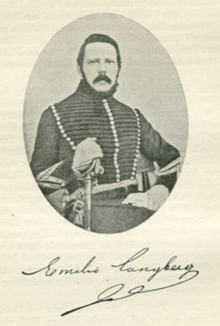Mayo is an Uto-Aztecan language. It is spoken by about 40,000 people, the Mexican Mayo or Yoreme Indians, who live in the South of the Mexican state of Sonora and in the North of the neighboring state of Sinaloa. Under the General Law of Linguistic Rights of the Indigenous Peoples, it is recognized as a "national language" along with 62 other indigenous languages and Spanish which all have the same validity in Mexico. The language is considered 'critically endangered' by UNESCO.
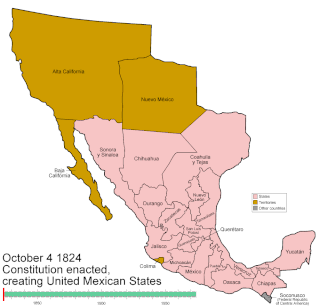
Mexico has experienced many changes in territorial organization during its history as an independent state. The territorial boundaries of Mexico were affected by presidential and imperial decrees. One such decree was the Law of Bases for the Convocation of the Constituent Congress to the Constitutive Act of the Mexican Federation, which determined the national land area as the result of integration of the jurisdictions that corresponded to New Spain, the Captaincy General of Yucatán, the Captaincy General of Guatemala and the autonomous Kingdoms of East and West. The decree resulted in the independence from Spain.

Organización Editorial Mexicana, also known as OEM, is the largest Mexican print media company and the largest newspaper company in Latin America. The company owns a large newswire service, it includes 70 Mexican daily newspapers, 24 radio stations and 44 websites.
Francisco R. Almada was a Mexican teacher, investigator, historian and politician. He served as governor of the state of Chihuahua on two occasions.

Ramón Corral Verdugo was a Mexican politician who served as the Vice President of Mexico under President Porfirio Díaz from 1904 when it was reestablished until their resignations in May 1911, due to mounting pressure from Liberal forces during the Mexican Revolution. He previously served as Governor of the Federal District and Secretary of the Interior.

The Provincias Internas, also known as the Comandancia y Capitanía General de las Provincias Internas, was an administrative district of the Spanish Empire created in 1776 to provide more autonomy for the frontier provinces of the Viceroyalty of New Spain, present-day northern Mexico and the Southwestern United States. The goal of its creation was to establish a unified government in political, military and fiscal affairs. Nevertheless, the Commandancy General experienced significant changes in its administration because of experimentation to find the best government for the frontier region as well as bureaucratic in-fighting. Its creation was part of the Bourbon Reforms and was part of an effort to invigorate economic and population growth in the region to stave off encroachment on the region by foreign powers. During its existence, the Commandancy General encompassed the provinces of New Navarre, New Biscay, The Californias, New Mexico, New Santander, New Kingdom of Leon, Coahuila and Texas.

General Jacinto Blas Treviño González was a Mexican military officer, noteworthy for his participation in the Mexican Revolution of 1910 to 1921.
Manuel Antonio Cordero y Bustamante was a Spanish soldier and politician who served as acting governor of Coahuila, governor of the same province (1798–1817), acting governor of Texas (1805–1808) and governor of the province of Sonora and Sinaloa.
Most Mexican states do not have an official flag. For these states, a de facto flag is used for civil and state purposes. State flags of Mexico have a 4:7 ratio and typically consist of a white background charged with the state's coat of arms.

Antonio Pascual Narbona was a Spanish soldier from Mobile (Mauvila in Spanish) now in Alabama, who fought native American people in the northern part of Mexico around the turn of the nineteenth century. He supported the independence of Mexico from Spain in 1821. He was Governor of the territory of Santa Fe de Nuevo México from September 1825 until 1827.
Events in the year 1857 in Mexico

Northern Mexico, commonly referred as El Norte, is an informal term for the northern cultural and geographical area in Mexico. Depending on the source, it contains some or all of the states of Baja California, Baja California Sur, Chihuahua, Coahuila, Durango, Nuevo León, Sinaloa, Sonora and Tamaulipas.
José Joaquin del Calvo Lopez was a Mexican soldier.
Charles Conant Maldonado was a Mexican businessman, colonel, and politician, one of the founders of the Sonora-Sinaloa Irrigation Company (SSIC) along with his brother Joseph Benjamin (Benito) Conant Maldonado and Santos Valenzuela, a businessman from the agricultural town Cócorit, Sonora. In 1883 he was municipal president of Ocampo, Chihuahua, after Sonoran Governor Ignacio Pesqueira banished him from Sonora in 1873, for having taken up arms against him.
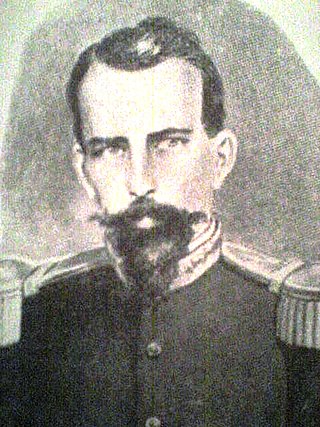
José Antonio Abundio de Jesús Rosales Flores (1822-1865) was a Mexican Brigadier General during the Reform War and the Second French intervention in Mexico. Also known as the Hero of San Pedro for his victory at the Battle of San Pedro, Rosales was the Governor of Sinaloa after overthrowing Jesús García Morales from October 5, 1864, to March 9, 1865, before being killed at the Battle of Álamos.
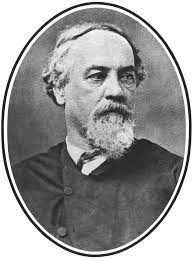
Ignacio Pesqueira García (1820-1886) was a 19th-century Mexican general and politician. He was the Governor of Sonora over six times, with two of the six terms being an insurgent governor during the Second French intervention in Mexico.
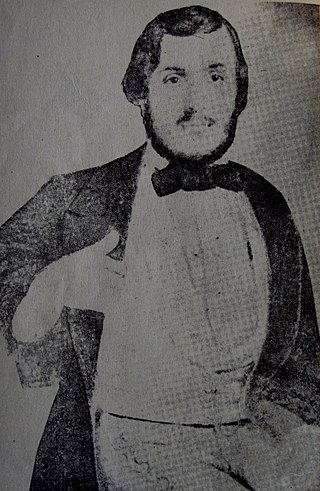
José María Tranquilino Almada y Quirós (1822-1866) was an Imperial Mexican Colonel of the Second French intervention in Mexico. Popularly known as Chato Almada, he was one of the most prominent monarchist figures within the state of Sonora, known for his victory at the Battle of Álamos.

Ángel Martínez, also known as the Machetero or El Machete was a Mexican general during the 19th-century. He had a prominent military career during the Second French intervention in Mexico, being a key commander across the state of Colima. He was also a major figure of the Yaqui Wars, notably ordering the execution of Cajemé.
